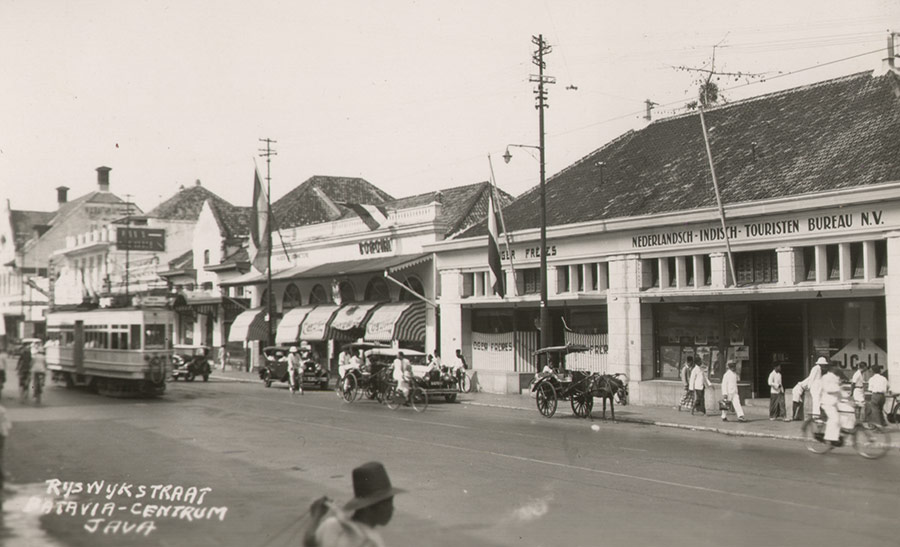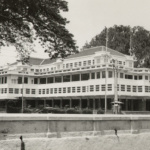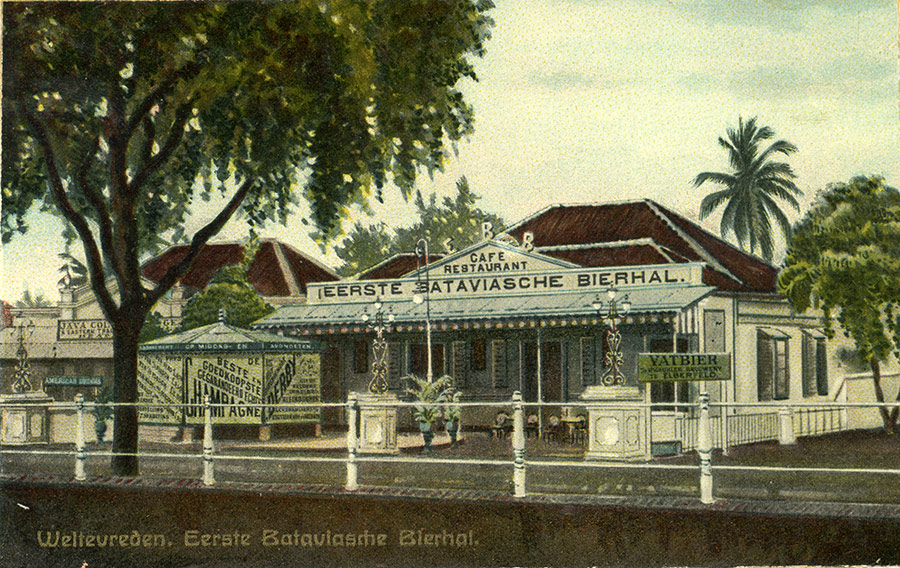Reflections on Jakarta’s History through Tourism Perspective during the Dutch Ethical Policy (1901 – 1942)
Indonesian Scholarship and Research Support Foundation (ISRSF), 2017, By: Madito Mahardika
Introduction
The role of government is critical for the tourism industry as a source of guidelines and vanguard for better social and economic welfare. In Jakarta case, the city has long inherited vast touristic commodities from the heritage buildings to acentrum of cultural diversity. To comprehend the historical and contemporary dimensions of tourism, it is imperative to understand the Policy that the government had been taken in the past. This research intends to present the impact of the state policy, especially during the Dutch Ethical Policy, on the social and economic welfare of its citizens using the perspective of tourism. Through this paper, the effort of a city to achieve greater development will be shown with regards to moral responsibility.
The Tale of Complaint

To derive contemplation from tourism, one must look to history because tourism is a tool to profit from it. According to Merrillees, during the start of the twentieth century, the Dutch Queen Wilhelmina declared that the colonial government of the
Dutch East Indies, the colonial name of Indonesia, must prioritise the welfare of both the European and indigenous Indonesian population equally.[1] In 1901, Queen Wilhelmina announced the Ethical Policy was to be implemented effective immediately. The Policy was designed as a way to give something back to the people of Indonesia after long periods of ruthless exploitations. The colonial government identified two sectors as their initial top priorities; education and health care.[2] Over time, the economic sector also selected as a priority and not without reason. A few years before the Dutch Ethical Policy was in effect, there was one event in particular that had arguably contributed to this outcome. It sparked debate amongst the top policymakers in the Netherlands on the situation in the Dutch East Indies as it had affected the colony’s reputation internationally and ultimately had disrupted their trade efforts in the global stage. the Dutch East Indies was accused as a hostile place for the tourists. Eliza R. Scidmore, a member of the prestigious National Geographic Society, travelled to the island of Java and published a book about her journey which had caught people imagination on how bad the situations were in the Dutch East Indies, she emphasised the quality of tourism and hospitality in Batavia, the colonial name of Jakarta, in her book.
In 1897, Scidmore wrote that the Government of the Dutch East Indies was indifferent towards any form of a visit fromthe people of foreign origin. Arrived in Batavia, she wrote that the Dutch did not welcome tourists, nor encouraged one to visit their paradise of the Indies.[3] Tourists were treated without a sense of hospitality as if these tourists were the agent of espionage. The colonial authorities must know, within twenty-four hours, the motivation why the tourists wanted tovisit the Dutch East Indies. They demanded one’s name, age, religion, nationality, place of nativity, occupation, the name of the ship that the tourists travelled on to Java, and the name of its captain. In a case where one failed to do so, they had to engage with life-threatening consequences. Another permit called Toelatings-kaart, or admission ticket, must be obtained should one wanted to travel farther than Buitenzorg (now Bogor). Their passports usually accredited them as a “Visitor who travels the interior for scientific purpose.”[4] Scidmore capacity as the member of the prestigious National Geographic Society made her narrative strongly received and acknowledged as a trustworthy testimonial to the life in Batavia from the tourist perspective.[5] Her message was a hit to the colonial authority that tourism in the Dutch East Indies was poorly managed.

The business community in Batavia recognised the stimulus to the economy that tourism could provide to the social and economic welfare. They labouriously pushed the idea and lobbied the colonial authority for better administration and management in the tourism industry which eventually led to the establishment of Vereeniging Toeristen Verkeer or the Official Tourist Bureau in 1908, during its early stage, the colonial government agreed to partly fund the Bureau. The Bureau headquarter was initially located at the famous Hotel des Indes in Batavia because the general manager of the hotel at that time, J. M. Gantvoort, was instrumental in the Bureau’s establishment although it soon had its building located at the western end of Rijswijk (now Jalan Veteran).[6] The establishment of the first Dutch East Indies Official Tourist Bureau in Batavia marked the colonial government recognition of the importance of tourism development as they were resolved to utilise tourism into the whole state development process to recover its reputation and at the same time,introduced the Dutch East Indies as an emerging tourist destination.
Tourism in Effect
The favoured tourism policy in the Dutch East Indies was owed to the opening of Suez Canal in 1869. During that period, the Dutch East Indies government was grappled with a critical problem because the cargo shipment process to Batavia was severely disrupted. According to Abeyasekere, cargo ships were unable to dock at the Port of Batavia because of theirlarge size. Meanwhile, with the increased trade that occurred at that time, the port capacity can no longer accommodate those ships as it wasn’t designed to harbour ships that large and many due to the mouth of Ciliwung River silting up, large ships had to anchor even further from land and needed the services of lighter ships in Batavia to transport their cargo into the city through river canal. The efforts to keep the entrance passage to the river free from harm was a life-threatening work and involved an arduous struggle against sandbanks with a combination of dredges. The construction of the canal walls out into the sea was carried out despite deemed as time-consuming, inefficient, and very dangerous work.[7]

The urgent matter to build a new port in Batavia that can make the cargo shipment ran efficiently whilst at the same time can rival Singapore as the major port in Southeast Asia was then proposed. The colonial authority acknowledged its importance and decided to make a blueprint of a new port 9 kilometres to the east of the old port of Batavia. The construction of this new port began in 1877 and was completed in 1886. The dispute between the colonial authorities was imminent throughout those years; the Batavia Chamber of Commerce was boldly against the decision to build a new port because they thought it would result in the rapid decline of the profitable lighter ships business in the old port of Batavia.[8] The new port was then named Tandjong Priok Port (now Tanjung Priok) and still in operation to this day. The new port was also being integrated through railway network with the Batavia Zuid station (now Jakarta Kota Station) in Oud Batavia (now Kota Tua). Scidmore described the train ride panorama from Tandjong Priok port to the Batavia Zuid station as “Source of life and every economical blessing of native existence.”[9] Scidmore’s description in her book verified the evidence of the tourism activity in the form of transportation in Batavia before the establishment of the Official Tourist Bureau. At that time, there were no ships that were dedicated fully to transport tourists to the Dutch East Indies, they had to travel on a cargo ship.
Between 1900 and 1930, Indonesia’s economy was mainly comprised of three major sectors; agriculture, industrial, and services. Agriculture was the single most important sector until the 1970s.[10] During that time, tourism as an industry was yet being defined as a separate entity in Indonesia’s economic roadmap. By its principle, tourism is based on service interactions between many industries that are involved in a travelling activity. The transportation sector, which was toldby Scidmore whilst she travelled as a passenger onboard the ship, was in line with the definition of tourism. Goeldner and Richie stated that tourism as an industry encompasses all travel providers that deliver travel experiences such astransportation, accommodations, eating and drinking establishments, shops, entertainment, outdoor activity facilities, and other available services dedicated for individuals or groups who are travelling away from home.[11]
According to van der Eng, the services sector at that time was based on the shipping activity that was reflected from Indonesia’s exports which had exceeded the import of goods on average by 36%. At that time, the services sector slightly overlapped the agriculture sector due to the increase in the Dutch East Indies economic capacity which grew faster in sizethan its population.[12] Although the data did not clearly show the correlation between the tourism and services sector in 1900-1930, there’s an evident that tourism activity was happened in Batavia because of the inbound tourist who arrived on cargo ships.[13] According to Merrillees, Aside from shipping goods such as mail and cargo, the shipment business in Dutch East Indies also offered the transport service for inter-island passengers which also made domestic travel at that time possible. One of the most well-known and dominant companies in Indonesia during the last half of colonial rule was Koninklijke Paketvaart Maatschappij (Royal Packet Navigation Company) or the KPM. They conducted international shipment services to Singapore, Penang, and Australia aside from the maintained domestic shipment between the islands of Indonesia.[14]
Visit Weltevreden
The establishment of the Official Tourist Bureau in 1908 had set tourism as one of the driving factors in the service sector to enhance the Dutch East Indies economy. Furthermore, the establishment of the Bureau was also based on arguments and considerations that there was a prospective tourist destination area in Batavia, the area in question refer to the large colonial district called Weltevreden, nowadays the area was divided into several subdistricts namely; Sawah Besar, Gambir, Senen, and Menteng. Established way south from Tandjong Priok port as a living quarter and later developed as a main tourist destination of the city. Weltevreden or the “uptown” served as Batavia’s prime element in their marketing campaign to lure the tourists of European origin to visit Batavia during the nineteenth century to the early half of thetwentieth century. It leaves the northern part of Batavia known as Benedenstad or lower town (now Pasar Ikan),[15] socially deprived because it then functioned solely as commercial and banking hub for Batavia from thereafter.[16] Weltevreden was advertised as “the queen of the east” to romanticise the long lost term glorified by the Dutch coloniser around 1730s. Tanu Trh stated that Batavia had been hit by the infamous Batavia plague which made the environment in Batavia deteriorated fast; the poor sanitation of the city had contributed to the escalation of the plague.[17] Therefore, under the colonial government authorisation, the European settlers of Batavia then moved south and established a new town to escape the adversity caused by the plague.
Weltevreden was developed to facilitate the agenda of the European settlers where government and military administration were built in the same location with the entertainment and shopping districts. According to Merrillees, tourists who visited Batavia often regarded Weltevreden as a European town in a tropical setting.[18] Famous hotels were built to accommodate the tourists whilst they spent their leisure time in Batavia, hotels such as the Hotel der Nederlanden, Hotel des Indes, and The Grand Hotel Java were highly regarded in the Dutch East Indies. A hefty amount of tourists arrived in Batavia from Singapore with steamships that also transported cargo goods. Many individuals in Singapore worked as the Liaison, a profession of what now known as travel agents. They were appointed by the Official Tourist Bureau in Batavia and congregated at the port providing alluring information on Java to convince the travellers to visit the Dutch East Indies. Aside from Singapore, the Bureau also appointed agents in strategic and busy ports such as Port Said (Suez Canal), Hong Kong, Shanghai, and Sydney. Merrillees described that the duty of travel agent was to inform thetravellers on the manifold attractions of Java and to offer them every possible inducement for extending their tour to theDutch East Indies.[19]

In Batavia, tourist attractions were built and centralised in an area called Noordwijk (now Jalan Juanda) and Rijswijk (now Jalan Veteran). According to Merrillees in the early 1900s, Noordwijk and Rijswijk were developed as an elite residential and fashionable shopping district. The Eerste Bataviasche Bierhal or first Batavia Beer Hall was located in Noordwijk alongside the Maison Versteeg, the most celebrated restaurants at that time which had a dance hall on the upstairs and an open-air café along with bar downstairs which faced the street where there was an in-house band performed every evening. At that time, French pop culture was a big hit in Batavia, the beautiful Schouwburg Theatre (now Gedung Kesenian Jakarta) marked as a place where the French pop culture wave began and influenced the European cultural and social life in Batavia from the mid-1830s. The Schouwburg Theatre was home for the show of visiting French theatre troupes with real actresses, their performances were highly regarded and popular. The strong influence of French culture in Batavia was rooted with the establishment of Frans Buurt or French Neighbourhood in the same area where the most prestigious club in Batavia called Societeit de Harmonie or the Harmonie Society was located. A majestic public garden such as the Wilhelmina Park was built to compliment the grand Koningsplein square, one that was proudlyregarded by the Batavians as one of the largest squares in the world at that time.[20] Therefore, the Official Tourist Bureau took full advantage of Weltevreden as one of the Dutch East Indies prime tourist destinations in their tourism marketing campaign as they targeted the European tourists’ segment.
Conclusion
Governments may come and go – so does the Policy which represents them to govern as the ruler of a state, what remains is the legacy of bygone days that are waiting to be utilised in a form of heritage. During the Dutch Ethical Policy era, Jakarta sought to develop the concept of city tourism to profit from the urban development that had been carried out for centuries during the European colonisation period. The impact of tourism development was well-received by the European community as more wanted to visit and eventually settled in Batavia. The number of the European population was doubled between the span of 1905 to 1917, the figure increased from 13,805 to 29,228, and then climbed further to 35,260 by 1927.[21] This was in a sense, went in line with the implementation of the Ethical Policy to create a prosperous population in the colony although over time, the development was not very much felt by the indigenous Indonesian as the Policy favoured the European agenda greatly. Whether a government is representing one group of community or not, the state policy should represent the greater good of all parties involved. Tourism is being implemented and well-received in many countries. After all, it acts as one of the most driven economic factors because it can bring sustainable income to the nation, creating more jobs for its citizen, and transmit progressive thinking through the cultural exchange which based upon the foundation of equal rights and freedom. On the latter, the effect will hold an integral part for it will be pointless to have a vast resource without any sense of sovereignty.
—
[1] See Scott Merrillees, Greetings from Jakarta: Postcards of a Capital 1900 – 1950 (Second Edition). (Singapore: Equinox, 2014) p. 59.
[2] Ibid.
[3] Eliza Ruhamah Scidmore, Java: the Garden of the East. (New York: Century, 1897) p. 22.
[4] Ibid.
[5] See Patas.id, Sejarah Lampegan: Catatan Perjalanan Eliza Ruhamah Scidmore. (25th August 2017).
From: https://www.patas.id/2017/08/25/sejarah-lampegan-catatan-perjalanan-eliza-ruhamah-scidmore/ Accessed on 14th November,
2017 at 8.20 pm.
[6] Merrillees, Op.Cit. pp. 78-79.
[7] Susan Abeyasekere. Jakarta: A History (Revised Edition). Singapore: Oxford University Press, 1989. pp.48-49.
[8] Ibid. p.49.
[9] Scidmore, Op.Cit., p.18.
[10] See Pierre Van der Eng. Indonesia’s Growth Experience in the 20th Century: Evidence, Queries, Guesses. (Canberra: The Australian
National University, 2002) p.1. Downloaded: 14th November 2017 at 5.01 pm.
From:https://socialhistory.org/sites/default/files/docs/ecgrowtheng.pdf accessed: 14th November 2017 at 04.59 pm.
[11] Charles R. Goeldner, J. R. Brent Richie. Tourism: Principles, Practices, Philosophies (Eleventh Edition). ( New Jersey: John Wiley
& Sons, Inc. 2009) p.6
[12] Van der Eng. Op.Cit., pp.2-3.
[13] Inbound tourist involving non-resident travelling in another country of their origin. for more details, see UNWTO. Frequently
Asked Questions. (No Published Date) From: http://statistics.unwto.org/content/faqs Accessed on 15th November 2017 at 9.49 am.
[14] Merrillees, Op.Cit. pp.50-51.
[15] Alwi Shahab. Betawi: Queen of the East. Edited by Yayan Supriatna and RA Gunadi, Jakarta: Republika, 2002. p.12.
[16] Abeyasekere. Op.Cit., p.48.
[17] See Tanu Trh. “Orang Belanda Dulu Minum Air Ciliwung.” Batavia: Kisah Jakarta Tempo Doeloe. Edited by Threes Susilawati,
Jakarta: Intisari, 1988. pp. 162-165.
[18] Merrillees, Op.Cit. p.57.
[19] Ibid., p.78-79
[20] Ibid., pp.50-92
[21] Ibid., p.57
BIBLIOGRAPHY
Books:
Abeyasekere, Susan. Jakarta: A History (Revised Edition). Singapore: Oxford University Press, 1989
Goeldner, Charles R., J. R. Brent Richie. Tourism: Principles, Practices, Philosophies (Eleventh Edition). New Jersey: John Wiley & Sons, Inc. 2009
Merrillees, Scott. Greetings from Jakarta: Postcards of a Capital 1900 – 1950 (Second Edition). Singapore: Equinox, 2014
Scidmore, Eliza Ruhamah. Java: The Garden of the East. New York: Century, 1897
Shahab, Alwi. Betawi: Queen of the East. Jakarta: Republika, 2002
Susilowati, Threes, editor. Batavia: Kisah Jakarta Tempo Doeloe. Jakarta: Intisari, 1988
Journal:
Van der Eng, Pierre. Indonesia’s Growth Experience in the 20th Century: Evidence, Queries, Guesses. Canberra: The Australian National University, 2002
Website:
Patas.id. (25th August 2017). Sejarah Lampegan: Catatan Perjalanan Eliza Ruhamah Scidmore. From: https://www.patas.id/2017/08/25/sejarah-lampegan-catatan-perjalanan-eliza-ruhamah-scidmore/ Accessed on 14thNovember 2017 at 8.20 pm.
—
